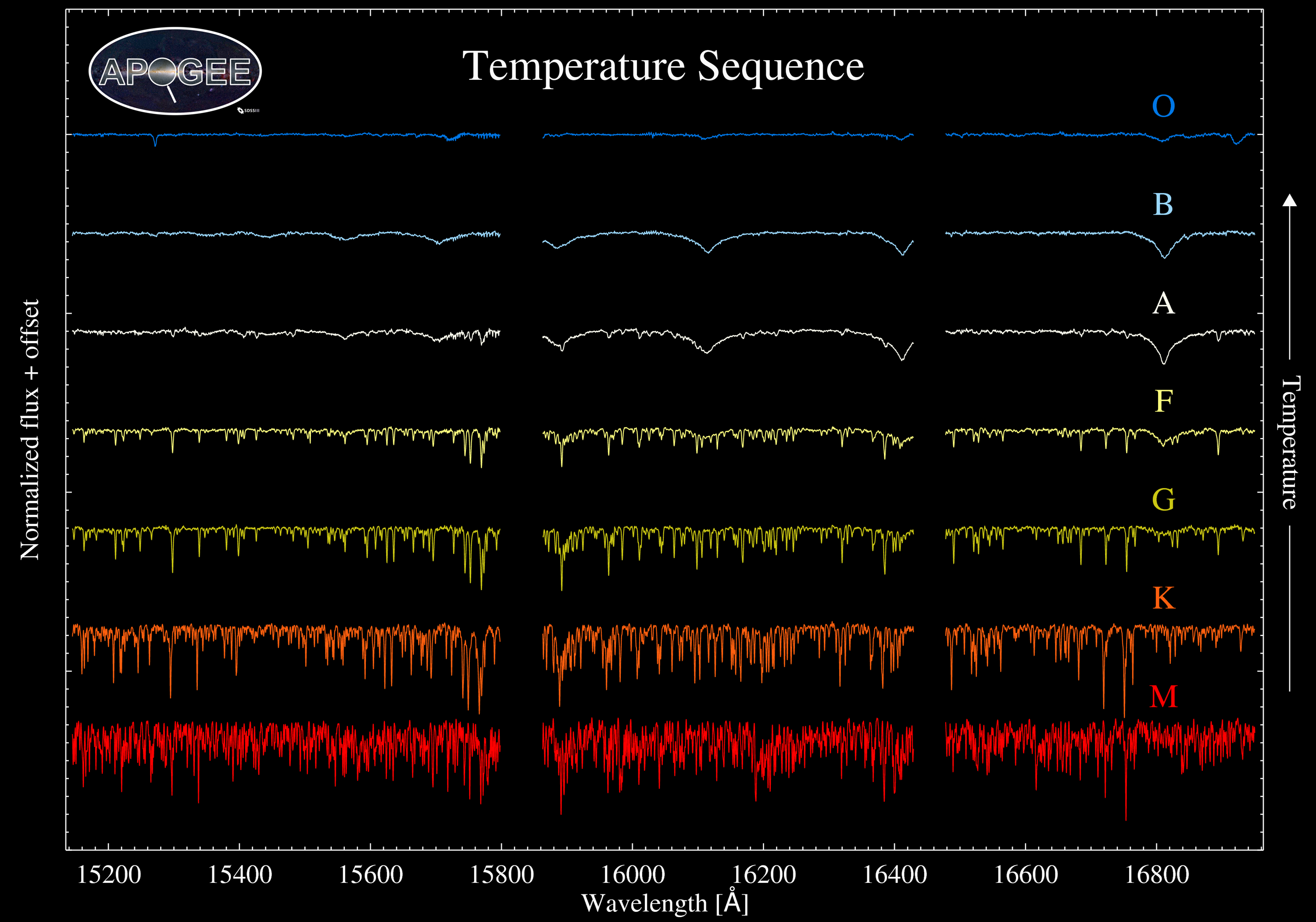APOGEE Observations
APOGEE Observational Strategy
APOGEE acquires 300 spectra simultaneously in a single observation with state-of-the-art, cryogenic, near-infrared spectrographs. The actual spectral data acquisition relies upon plugplates, which are aluminum disks placed in the focal plane of the telescope. Each plate corresponds to a specific patch of sky and is pre-drilled with holes corresponding to the sky positions of objects in that area. One or more unique plates cover a targeted area of the sky.
For a single star, significant variation in its radial velocity over time indicates the possible presence of a companion. Accordingly, the vast majority of APOGEE plug plates are observed multiple times on different nights to allow for the robust monitoring of radial velocity variations. A single observation is called a visit, and visits are identified with a plate number and the MJD (Modified Julian Date) on which that plate was observed. Plates with three or more visits are observed with a pre-determined cadence (i.e., the scheduling of multiple visits for a particular sky location over a set timeline).
Plate Plugging
The first step in observing a plate is to perform "plate-plugging." Fibers are plugged into pre-drilled holes. Then, the specific fiber is mapped to its position on the plate by shining a laser on the slit-head. This procedure determines which fibers correspond to which holes and, therefore, to which stars. These mapping data are incorporated into one of the Header and Data Units (HDUs) of the apPlate file.
Each hole on a plate corresponds to a single object on the sky. The fibers plugged into the plate holes bring the light from the telescope focal plane to the (pseudo)slit of the spectrograph. Accordingly, each object spectrum is also referenced by the number of the fiber (fiberID) at the pseudoslit with which it was collected. Plates used by the APOGEE survey have 300 fibers.
Raw Data Collection
A cartridge containing the plugged plate is mounted on the telescope, and the telescope is slewed to the designated plate location. Calibration frames (darks, arcs, flats) are acquired at the beginning and end of nightly observations. The telescope field acquisition and guiding are performed, and then, a standard observation sequence commences consisting of a dark, a flat, and an exposure series. A standard-length observation is a series of 8 exposures of 500 seconds each. Note that the exposure number can vary based on target faintness (for such targets, a double-length exposure sequence is employed), available time, observing conditions, etc.
The resolution of the APOGEE spectra in comparison to the pixel size of the APOGEE detectors causes the spectrum from a single exposure to slightly undersample the spectral resolution at the short-wavelength end. APOGEE spectra are taken in pairs, with the detectors shifted slightly (by a distance of one half of a detector pixel) between the two exposures. This procedure mitigates the impact of undersampling.
This shifting is referred to as dithering, and each "dither pair" of exposures includes observations at these offset dither positions. A standard 8-exposure APOGEE observing sequence consists of exposures at the two differ dither positions (A and B) and typically taken in the pattern ABBA ABBA. The data reduction pipeline requires exposures in dither pairs so that any unpaired exposure is discarded.
The APOGEE infrared detectors have the capability to be read "non-destructively," meaning that the amount of charge per pixel can be detected without affecting that charge. Thus, the levels in the detectors are measured multiple times within a single exposure. While the readout noise can be significant for a single read of the detectors, the ability to read them multiple times during an exposure allows for a reduction in the net readout noise in the final image. For APOGEE, the detectors are read in an "up-the-ramp" mode where a read is taken every 10.7 seconds. Thus, a single image generally consists of 47 readouts obtained over a total exposure time of 500 seconds. Because of the multiple non-destructive reads, the raw APOGEE data are a "data cube," for which two of the dimensions represent the location on the detectors, and the third dimension represents the time within the total exposure.
Observational Data Products
If a plate is observed on more than one MJD, the fibers will be replugged. It is possible than an object on the same plug plate will have a different fiberID for different MJDs and, thus, the same star could be observed with a different fiberID at each visit. The data products provided by APOGEE survey are fully described, including links to their data models, on Data Access.



